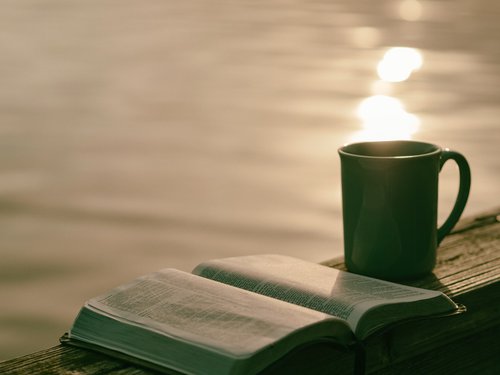Prayer Resources

'Prayer is about much more than simply saying our prayers. Prayer is about being open to God. Christians believe that God is at work within each one of us whether we are aware of it or not. But through prayer we put ourselves in the best possible place to receive what God wants to give us. We do this in all manner of ways; through silence and stillness, in words and song, in movement and dancing and through all kinds of creative activities. Prayer is an openness of spirit to meet with the Spirit of God.
'Prayer is also a means of offering back to God all that he has given to us; even our very selves in response to his love for us. It is the means by which we share with him our hopes and desires as well as our worries and concerns for our world and its needs and the people we love’.
‘Prayer is the turning of our whole mind, our whole being towards God’.
The pattern of Jesus
Jesus is the pattern for our own prayer as we see him completely aware of his father at all times, whatever he was doing and often in prayer. Prayer – opening our spirit to God - takes many forms.
Saying what is on our hearts

Forgive me and help me to start again’.
Words of scripture

Jesus often used words of scripture in his prayer. When he cried out, ‘my God, my God, why have you forsaken me?’ he was using the words of a psalm. (See Mark 15.34; Psalm 22.1). We too can use the words of scripture to cry out to God. The psalms are especially helpful for this as so many human emotions are expressed through them. If we feel abandoned by God we can join with Jesus in the opening to psalm 22. If we feel joyful and thankful we might call to God in the words of psalm 148 (a psalm of praise).
If we are seeking God we can say:
We also use scripture to listen to God and to meet Jesus. We can find a passage which attracts us and read it slowly, staying with the words that seem to speak to us, simply ‘listening’ with our heart and trusting that God will give us what we need. If you need a place to start, try psalm 139. Or we can read a story about Jesus and imagine ourselves there – watching what Jesus does, picturing the scene, hearing what goes on – and speaking with God about whatever comes to us from this. (For example, the feeding of the five thousand in Luke 9.10-17).
Words of scripture are read in church and woven into the fabric of the prayer of the church - we can also pray with the church.
Praying with the church

Jesus and his followers frequently went to the temple to teach, and at the times of daily prayer [Luke 21.37; Acts 3.1]. The Christian church in turn took on a pattern of daily prayer, especially in the morning and in the evening. We can use such services alone, or by finding others who meet in a church building or online.
There are some versions of morning and evening prayer which are based on ancient patterns such as in the Church in Wales, or the Church of England’s Common Worship (available in the App ‘Daily Prayer’). There are others which are more modern, some with a Celtic flavour, such as those from Iona https://iona.org.uk/about-us/prayer/daily-office-from-the-abbey-worship-book/ or the Northumbria Community https://www.northumbriacommunity.org/offices/how-to-use-daily-office/].
Pray as You Go is a popular app offering daily prayer from an Ignatian tradition. It presents a ten-minute time of prayer each day which includes music, scripture, images and reflection.
Physically meeting with others, as Jesus did, can be a great support to us in our prayer. You can locate your local church here and find out when you can meet with others for prayer.
Praying in nature

Of course, we don’t have to be in church to pray. Jesus often spoke about the natural world when he spoke about God or about the Kingdom of God [Matthew 6.26-28].
And great theologians have taken up this theme:
Many people find being in nature helpful in drawing close to God – either in the steady rhythm of walking and breathing, or in sitting quietly, surrounded by the natural environment.
Whether in nature, in church or in our homes, we don’t always need words.
Silence and stillness

Becoming silent and still can be something that we do in order to settle for prayer – or it can be prayer itself. We know ourselves to be in God’s presence. We offer ourselves, fully present, to God. And that is enough.
The prophet Elijah found God in ‘a sound of sheer silence’ (1 Kings 19.7-17).
In our modern world it is seldom silent around us, even in the quietest room - and certainly not in nature! Finding silence or stillness within can be very difficult as our thoughts tumble over pasts event and future plans, ideas and emotions.
Here are three ways that can help us:
- We can pay attention to our breath, being conscious of it gently entering our bodies to bring us what we require, and leaving us, taking with it all that we no longer need.
- We can pay attention to our environment, listening to the sounds around us (this can often help to quieten the ‘inner’ noise and bring us stillness).
- We can hold a helpful word or phrase, saying it gently aloud or silently in our hearts. ‘Lord Jesus, have mercy on me’. ‘Lord, I seek you’. ‘Maranatha’ (‘come Lord’).
When our internal ‘noise’ disturbs this we can gently return to our chosen way of finding stillness.
You might like to try the app ‘Centering Prayer’ which is based on this way of praying.
Music and Dance

In contrast, prayer can involve singing, making music or using our bodies in praise of God. King David danced before the Lord with all his might! (2 Samuel 6.14a)
And the psalms urge us to sing and make music to God:
Praise him with trumpet sound;
praise him with lute and harp!
Praise him with tambourine and dance;
praise him with strings and pipe!
Praise him with clanging cymbals;
praise him with loud clashing cymbals!
Let everything that breathes praise the Lord!
(Psalm 150.3-6)
If we are not music-makers we might find it helpful to listen to the music of others. (Although all of us can sing - whether or not we can hold a tune!)
Praying creatively

Other forms of creativity as well as music or dance can help us to pray. When we create things ourselves, as an act of prayer, we reflect the image of God, the ultimate Creator. You might like to:
- Look at Rembrandt’s picture of the Prodigal Son - the colours, the mood, the different figures - and notice what happens inside you as you do this, speaking out your feelings to God.
- Find some paints or crayons. Choose a colour which speaks to you of God and one which speaks to you of yourself. Draw on paper with those colours without thinking about it too much, allowing your spirit to express itself and then look at what you have drawn. Are the colours close or far apart, strong or pale, full of energy, or tranquil? Does this reflect something of your life with God? Is there something you want to say to God as you look at what you have created?
- Knot three strands of ribbon together and plait them, using each ribbon as a strand of prayer (perhaps one for the world, one for others, one for yourself). Look at your plait and reflect before God on how you interact with others and the world.
Prayer of reflection (examen)

Many of us mull over the day as we prepare for sleep. This too can be an opportunity for prayer. We can ask God’s Spirit to show us those times in the day when we drew close to God (to love, to life). We can give thanks for those times and offer the day to come to God’s service.
A pattern of prayer
Many Christians find it helpful in their spiritual journey to weave a pattern of prayer into their life. This might include prayer with others (e.g. in church) and prayer alone. If you want to do this it’s worth making a simple and realistic plan (better to aim for five minutes a day, and do it, than plan to pray for an hour a day and ‘beat yourself up’ for not managing it).
As well as his regular prayer Jesus sometimes drew aside for more extended periods of prayer. We can go to a retreat house to do this. The Retreat Association has information about many different sorts of retreat http://www.retreats.org.uk/index.php . But if it isn’t practical for us to go away we may be able to put aside some extended time and space to pray at home.
We would be well-advised to:
Pray as you can, and do not try to pray as you can’t.
(Abbot John Chapman (1865–1933)
But Dom Chapman does assume that we are praying!
Christians learn to pray and it’s a lifelong task which is always helping us develop and grow. If you’d like to start there is help and some prayers you could start with on the Provincial website. If you are already on the way and would like the support of a spiritual director or companion, it may be that developing a relationship with a more experienced person of prayer could really help your own journey. There are times when it can be helpful to us to speak with someone else about our prayer and our life with God. Having another Christian walk alongside you is an ancient tradition (known as spiritual accompaniment, or as having a soul-friend or spiritual director).
If you would find this helpful do get in touch with the spirituality co-ordinator for Monmouth Revd Sam Helkvist